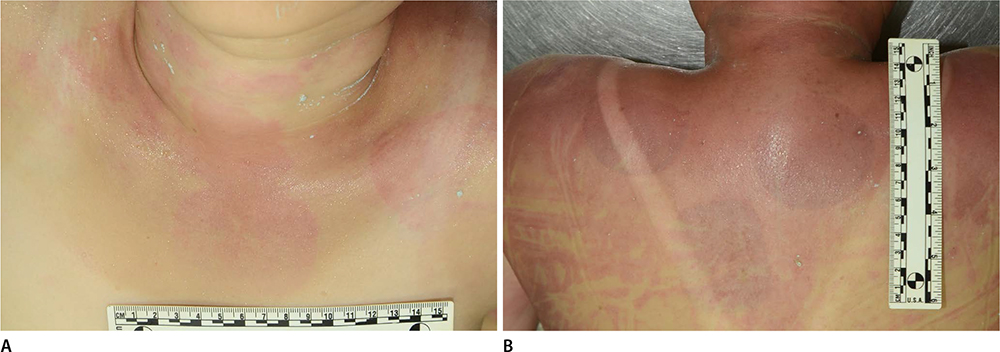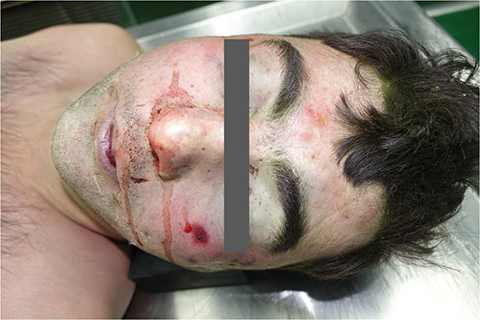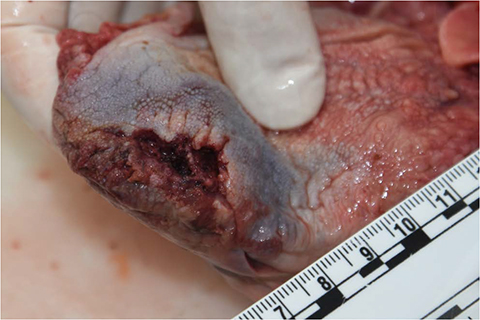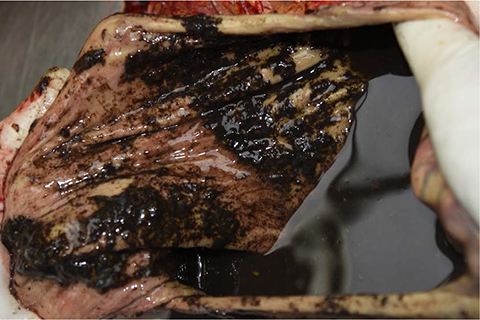Korean J Leg Med.
2018 May;42(2):71-75. 10.7580/kjlm.2018.42.2.71.
Various Forms of Fatal Nicotine Intoxications: Three Cases Report
- Affiliations
-
- 1Department of Pathology, Severance Hospital, Yonsei University College of Medicine, Seoul, Korea.
- 2Division of Forensic Medicine, National Forensic Service Daejeon Institute, Daejeon, Korea.
- 3Division of Forensic Investigation, National Forensic Service Seoul Institute, Seoul, Korea. sanchee@korea.kr
- KMID: 2412863
- DOI: http://doi.org/10.7580/kjlm.2018.42.2.71
Abstract
- Recently, fatal nicotine intoxications with electronic cigarette liquid have increased in Korea, but various kinds of cigarettes and smoking cessation aids may also cause fatal poisoning. We report cases of fatal nicotine intoxications involving causes other than the use of liquid nicotine. A 29-year-old woman (case 1) found dead in a hotel room with about 70 patches (21 mg dose) of nicotine on her body. Blood nicotine levels were 7.68 mg/L (heart) and 3.25 mg/L (femoral). A toxic level of zolpidem was also detected. A 28-year-old Uzbekistan man (case 2) was found dead in his uncle's room with his face covered with chewing tobacco. Blood nicotine levels were 7.3 mg/L (heart) and 4.6 mg/L (femoral). Blood alcohol level was 0.139%. A 55-year-old man (case 3) bit his tongue. As he was taken to the hospital, his wife put tobacco powders in his mouth for hemostasis, and he died of cardiac arrest. Blood nicotine levels were 2.01 mg/L (heart) and 0.96 mg/L (femoral). Nicotine-related deaths can be caused by various types of administration including transdermal and transmucosal routes, and relatively small doses may cause death, so meticulous investigation should be taken when such deaths are suspected.
Keyword
MeSH Terms
Figure
Reference
-
1. Jun YJ, Kim H, Park S. Suicidal death by nicotine poisoning. Korean J Leg Med. 2014; 38:167–170.
Article2. Yildiz D. Nicotine, its metabolism and an overview of its biological effects. Toxicon. 2004; 43:619–632.
Article3. Bannon YB, Corish J, Corrigan OI, et al. Transdermal delivery of nicotine in normal human volunteers: a single dose and multiple dose study. Eur J Clin Pharmacol. 1989; 37:285–290.
Article4. Gupta SK, Benowitz NL, Jacob P 3rd, et al. Bioavailability and absorption kinetics of nicotine following application of a transdermal system. Br J Clin Pharmacol. 1993; 36:221–227.
Article5. Kemp PM, Sneed GS, George CE, et al. Postmortem distribution of nicotine and cotinine from a case involving the simultaneous administration of multiple nicotine transdermal systems. J Anal Toxicol. 1997; 21:310–313.
Article6. Solarino B, Riesselmann B, Buschmann CT, et al. Multidrug poisoning involving nicotine and tramadol. Forensic Sci Int. 2010; 194:e17–e19.
Article7. Sanchez P, Ducasse JL, Lapeyre-Mestre M, et al. Nicotine poisoning as a cause of cardiac arrest? J Toxicol Clin Toxicol. 1996; 34:475–476.
Article8. Lardi C, Vogt S, Pollak S, et al. Complex suicide with homemade nicotine patches. Forensic Sci Int. 2014; 236:e14–e18.
Article9. Mayer B. How much nicotine kills a human? Tracing back the generally accepted lethal dose to dubious self-experiments in the nineteenth century. Arch Toxicol. 2014; 88:5–7.
Article
- Full Text Links
- Actions
-
Cited
- CITED
-
- Close
- Share
- Similar articles
-
- Cardiac arrest and severe encephalopathy following e-cigarette nicotine intoxication: a case report
- Signs and symptoms of nicotine withdrawal and adverse effects of nicotine patch
- Experimental Studies on the Relation between Nicotine and Sexual Hormone: Part IV. The Antidotal Action of Luteohormone on Nicotine Toxicity during Anaphylaxis: C. The Effect of Nicotine with Luteohormone on Anaphylaxis
- Suicidal Death by Nicotine Poisoning
- The relationship between nicotine dependency and depession in smokers





